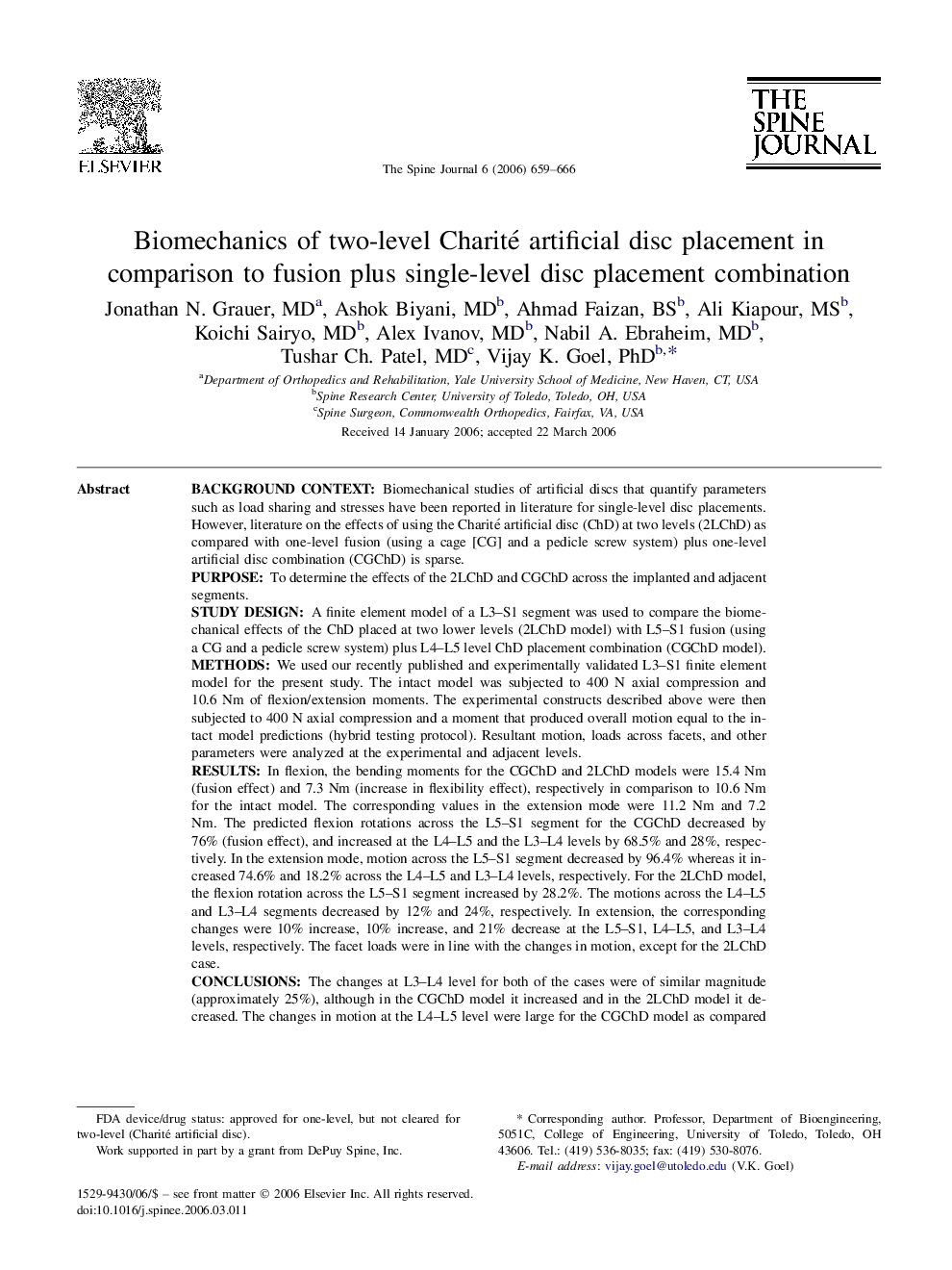| کد مقاله | کد نشریه | سال انتشار | مقاله انگلیسی | نسخه تمام متن |
|---|---|---|---|---|
| 4100122 | 1268671 | 2006 | 8 صفحه PDF | دانلود رایگان |

Background contextBiomechanical studies of artificial discs that quantify parameters such as load sharing and stresses have been reported in literature for single-level disc placements. However, literature on the effects of using the Charité artificial disc (ChD) at two levels (2LChD) as compared with one-level fusion (using a cage [CG] and a pedicle screw system) plus one-level artificial disc combination (CGChD) is sparse.PurposeTo determine the effects of the 2LChD and CGChD across the implanted and adjacent segments.Study designA finite element model of a L3–S1 segment was used to compare the biomechanical effects of the ChD placed at two lower levels (2LChD model) with L5–S1 fusion (using a CG and a pedicle screw system) plus L4–L5 level ChD placement combination (CGChD model).MethodsWe used our recently published and experimentally validated L3–S1 finite element model for the present study. The intact model was subjected to 400 N axial compression and 10.6 Nm of flexion/extension moments. The experimental constructs described above were then subjected to 400 N axial compression and a moment that produced overall motion equal to the intact model predictions (hybrid testing protocol). Resultant motion, loads across facets, and other parameters were analyzed at the experimental and adjacent levels.ResultsIn flexion, the bending moments for the CGChD and 2LChD models were 15.4 Nm (fusion effect) and 7.3 Nm (increase in flexibility effect), respectively in comparison to 10.6 Nm for the intact model. The corresponding values in the extension mode were 11.2 Nm and 7.2 Nm. The predicted flexion rotations across the L5–S1 segment for the CGChD decreased by 76% (fusion effect), and increased at the L4–L5 and the L3–L4 levels by 68.5% and 28%, respectively. In the extension mode, motion across the L5–S1 segment decreased by 96.4% whereas it increased 74.6% and 18.2% across the L4–L5 and L3–L4 levels, respectively. For the 2LChD model, the flexion rotation across the L5–S1 segment increased by 28.2%. The motions across the L4–L5 and L3–L4 segments decreased by 12% and 24%, respectively. In extension, the corresponding changes were 10% increase, 10% increase, and 21% decrease at the L5–S1, L4–L5, and L3–L4 levels, respectively. The facet loads were in line with the changes in motion, except for the 2LChD case.ConclusionsThe changes at L3–L4 level for both of the cases were of similar magnitude (approximately 25%), although in the CGChD model it increased and in the 2LChD model it decreased. The changes in motion at the L4–L5 level were large for the CGChD model as compared with the 2LChD model predictions (approximately 70% increase vs. 10% increase). It is difficult to speculate if an increase in motion across a segment, as compared with the intact case, is more harmful than a decrease in motion.
Journal: The Spine Journal - Volume 6, Issue 6, November–December 2006, Pages 659–666